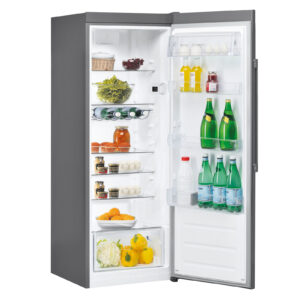
During a power outage, it is important to understand how long a fridge can go without power. The time frame for cooling depends on the brand and model of your refrigerator. Some common alternatives include dry ice or bottled water. It can also be helpful to use block ice or a cooler with frozen water or gel pack.
Dry ice
A refrigerator and freezer can remain cool without power for up to 48 hours. However, longer power outages can cause the contents to spoil. In these situations, dry ice can replace the cooling power of the fridge or freezer. A standard-sized freezer requires between 25 and 30 pounds of dry ice to maintain the desired temperature. If the freezer is larger, the quantity should be increased to three pounds per cubic foot of space.
Dry ice can also help you keep your fridge cold in the event of a power outage. You should be sure to use a container to store the dry ice, so it doesn’t leak into the fridge. Place the container in the refrigerator with the items you want to keep cold. When the power comes back on, the dry ice will help keep the whole fridge cold.
Bottled water
Keeping bottled water on hand during a power outage can be a lifesaver. Fridges, however, are not energy efficient, and they lose a bit of energy in the process of freezing bottles. That’s why it’s a good idea to purchase extra ice for your fridge freezer and use it whenever possible. This way, you can keep bottles cold while still preserving food for later use.
When it comes to choosing the best bottled water, it’s best to choose water that comes from a clean source and boil it first. This will kill any harmful bacteria and parasites. In addition, disinfectants such as iodine or chlorine dioxide tablets can make your water safe to drink. When using disinfectants, make sure you follow the directions on the package to ensure that you’re using them correctly.
Transferring food from fridge to freezer
In a power outage, transferring food from the fridge to the freezer is an option you can use. However, you should be aware of the temperatures inside the fridge. You should keep the temperature below 40 degrees. To do so, use an appliance thermometer to monitor the temperature inside the refrigerator.
Before transferring food from the fridge to the freezer without power, you must prepare the fridge before the power cuts. Before storing your food in the fridge, you should first separate foods according to the temperature. This way, you will be sure that the food will remain cold. Also, separate meat and poultry from other food items. Then, place them below the rest. It is a good idea to wear gloves and to use a well-ventilated room.
Power outages can last for a few hours or more. If you have to transfer food from fridge to freezer, you should know how long it will take. For example, it could take four hours to reach 40 degrees in a fridge. However, you should keep in mind that a fully filled freezer will keep food safe for 48 hours.
Safe time limit for perishable foods after ambient temperature rises above 40 degrees
Perishable foods must be refrigerated before they lose their freshness. In order to keep food cold, refrigerator temperatures must be kept at or below 40 degrees F. This safe temperature is ideal for items such as frozen goods, leftovers, and even carry-out food from restaurants. Foods should also be refrigerated as soon as possible after removal from an appliance. Foods that are beyond this temperature should be discarded as soon as possible.
Perishable foods can be damaged by a wide range of microbes. These pathogens can multiply rapidly even if their temperature does not rise. When temperatures rise above 40 degrees Fahrenheit, bacteria can multiply rapidly, compromising food safety. In addition, undercooked foods can harbor harmful bacteria that cause food poisoning.
Avoiding food waste during a power outage
During a power outage, it is essential to avoid wasting food. Several tips can help you minimize food waste. Fill up your water containers ahead of time, and cook food that will keep without refrigeration. If you have a refrigerator or freezer, keep its doors closed. This will help keep food cold for up to four hours, and a full freezer can keep the temperature for up to 48 hours. Perishable foods, such as meat, fish, can be salvaged and stored.
It is also important to check the temperature of food. If the temperature is above 41 degrees Fahrenheit, it can be unsafe for consumption. Food that is above this temperature can cause illnesses or even death. You can purchase a thermometer for your refrigerator or freezer that can help you keep an eye on the temperature of your food. You can buy one online or in a local store for a very low cost. During a power outage, you may be tempted to open your refrigerator or freezer constantly to check the temperature. However, this isn’t a good idea. Frequent openings can also lead to cold air leakage in the freezer.



